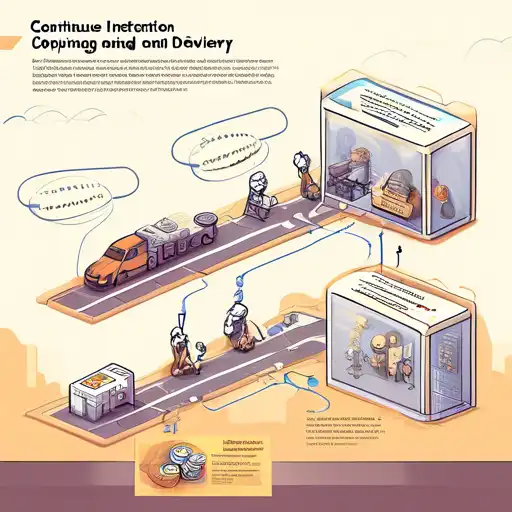What is Continuous Integration and Delivery?
Continuous Integration (CI) and Continuous Delivery (CD) are fundamental practices in modern software development, aimed at improving the efficiency and reliability of software releases. CI/CD enables developers to integrate code into a shared repository frequently, where automated builds and tests run to detect errors quickly. This article delves into the core concepts, benefits, and best practices of CI/CD.
The Core Concepts of CI/CD
Continuous Integration involves the automatic merging and testing of code changes from multiple contributors into a single software project. The primary goal is to identify and address conflicts and bugs early in the development cycle. Continuous Delivery extends CI by automatically preparing code changes for a release to production, ensuring that software can be deployed at any time.
Benefits of Implementing CI/CD
- Improved Code Quality: Automated testing in CI/CD pipelines ensures that code is tested thoroughly, reducing the likelihood of bugs reaching production.
- Faster Release Cycles: By automating the integration and delivery processes, teams can release updates more frequently and with greater confidence.
- Enhanced Collaboration: CI/CD encourages a culture of shared responsibility among team members, leading to better collaboration and communication.
- Reduced Deployment Risks: Automated deployments minimize human errors, making the release process more reliable.
Best Practices for CI/CD
To maximize the benefits of CI/CD, teams should adhere to several best practices:
- Maintain a single source repository for all code and scripts.
- Automate the build and testing processes to ensure consistency.
- Keep builds fast to provide quick feedback to developers.
- Test in a clone of the production environment to catch environment-specific issues early.
- Make every commit potentially shippable to uphold the principles of Continuous Delivery.
Challenges in CI/CD Adoption
While CI/CD offers numerous advantages, organizations may face challenges during adoption, such as resistance to change, the complexity of setting up pipelines, and the need for cultural shifts towards DevOps practices. Overcoming these challenges requires commitment, training, and sometimes, external expertise.
Conclusion
Continuous Integration and Delivery are transformative practices that streamline software development and deployment processes. By embracing CI/CD, teams can achieve higher efficiency, better product quality, and faster time-to-market. For those looking to dive deeper into DevOps practices, exploring DevOps tools and automation strategies can provide further insights into optimizing your development pipeline.
